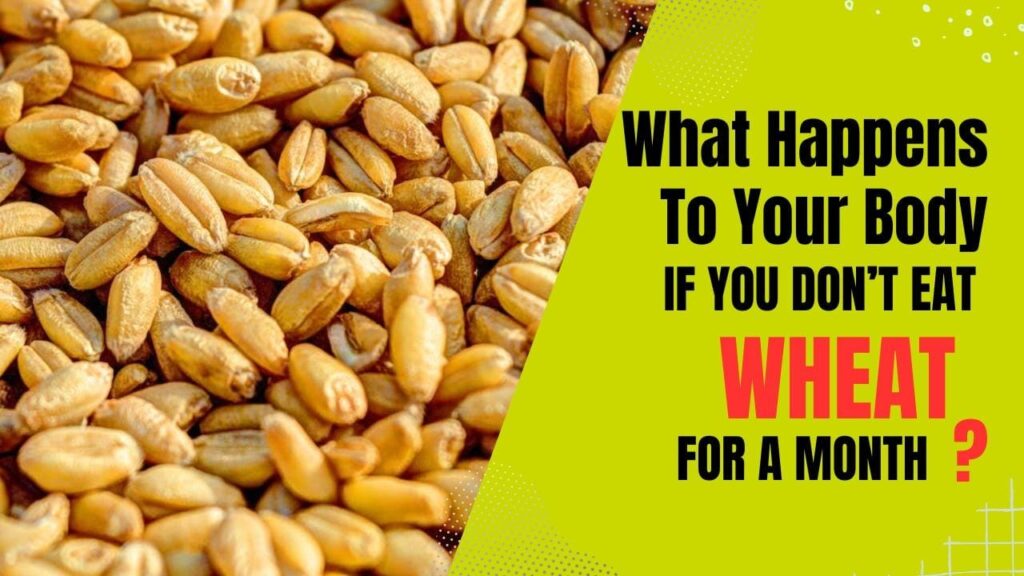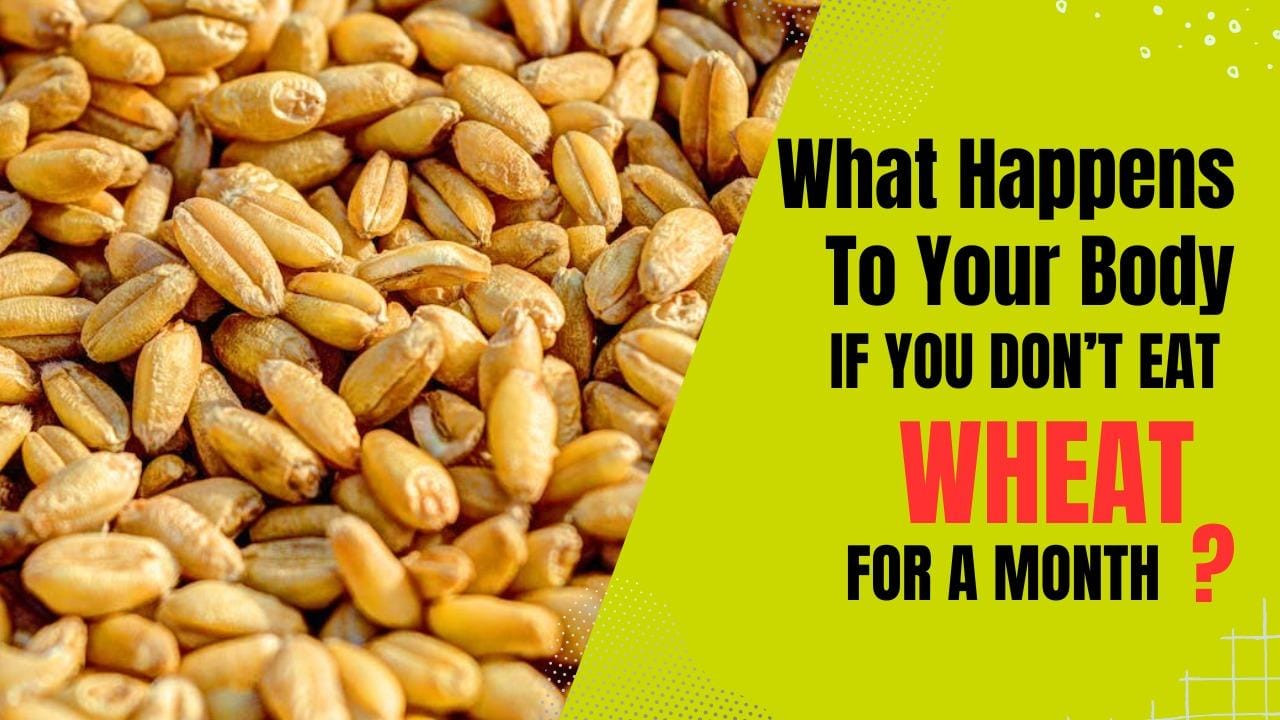
Why Is Wheat Not Good for You? Unveiling the Truth Behind This Common Grain
Wheat, a staple in diets worldwide, has faced increasing scrutiny in recent years. Many individuals report feeling better when they reduce or eliminate wheat from their diets, leading to questions about the potential downsides of this ubiquitous grain. Is wheat truly detrimental to health, or are these concerns overblown? This article delves into the reasons why wheat is not good for you for some individuals, exploring the science behind the claims and offering a balanced perspective.
Understanding Wheat: A Brief Overview
Wheat is a cereal grain cultivated globally, with numerous varieties used in bread, pasta, pastries, and countless other food products. Its widespread use is due to its versatility, affordability, and ability to provide energy. However, the wheat we consume today is significantly different from the wheat our ancestors ate. Modern wheat varieties have been bred for higher yields and gluten content, which may contribute to some of the negative health effects.
The Gluten Factor: A Major Concern
Gluten, a protein found in wheat, rye, and barley, is a primary concern for many. It’s what gives dough its elasticity and baked goods their chewy texture. While most people can tolerate gluten without issue, others experience adverse reactions. Here’s why wheat is not good for you if you have certain conditions:
Celiac Disease
Celiac disease is an autoimmune disorder triggered by gluten. In individuals with celiac disease, gluten consumption damages the small intestine, leading to malabsorption of nutrients and a range of symptoms, including diarrhea, abdominal pain, fatigue, and weight loss. Diagnosis requires blood tests and a biopsy of the small intestine. Strict adherence to a gluten-free diet is essential for managing celiac disease and preventing long-term complications.
Non-Celiac Gluten Sensitivity (NCGS)
NCGS is a condition characterized by symptoms similar to celiac disease but without the intestinal damage or autoimmune response. Individuals with NCGS experience symptoms like bloating, fatigue, brain fog, and joint pain after consuming gluten. The exact mechanisms behind NCGS are still being researched, but it’s believed that other components of wheat, such as FODMAPs, may play a role. Eliminating or reducing wheat intake often alleviates symptoms.
Wheat Allergy
A wheat allergy is an immune response to proteins found in wheat. Symptoms can range from mild (hives, itching) to severe (anaphylaxis). Unlike celiac disease, a wheat allergy is a classic allergic reaction involving IgE antibodies. Diagnosis is typically made through skin prick tests or blood tests. People with wheat allergies must avoid all products containing wheat. [See also: Gluten-Free Diet for Beginners]
The Carbohydrate Content and Blood Sugar
Wheat is a carbohydrate-rich food. While carbohydrates are an essential source of energy, the type and amount of carbohydrates consumed can significantly impact blood sugar levels. Refined wheat products, such as white bread and pastries, are quickly digested, leading to rapid spikes in blood sugar. Here’s why wheat is not good for you in excess:
High Glycemic Index (GI)
Wheat, especially refined wheat, has a high glycemic index, meaning it causes a rapid increase in blood sugar levels. Frequent consumption of high-GI foods can contribute to insulin resistance, weight gain, and an increased risk of type 2 diabetes. Choosing whole wheat products, which contain more fiber, can help mitigate this effect, but portion control is still important.
Potential for Weight Gain
The rapid blood sugar spikes caused by refined wheat can lead to increased insulin production, which promotes fat storage. Additionally, many wheat-based products are calorie-dense and low in nutrients, contributing to weight gain if consumed in excess. Replacing refined wheat with whole grains, fruits, and vegetables can support weight management.
Other Potential Issues with Wheat
Beyond gluten and carbohydrate content, other aspects of wheat may contribute to negative health effects. Understanding these factors is crucial for assessing why wheat is not good for you.
FODMAPs (Fermentable Oligosaccharides, Disaccharides, Monosaccharides, and Polyols)
Wheat contains FODMAPs, a group of carbohydrates that can be poorly absorbed in the small intestine. In susceptible individuals, FODMAPs can cause bloating, gas, abdominal pain, and diarrhea. A low-FODMAP diet, which restricts wheat and other high-FODMAP foods, is often recommended for managing irritable bowel syndrome (IBS) symptoms.
Lectins
Lectins are proteins found in many plants, including wheat. Some people believe that lectins can interfere with nutrient absorption and contribute to inflammation. However, the lectins in wheat are generally deactivated by cooking, and the potential negative effects are likely minimal for most individuals. Further research is needed to fully understand the impact of lectins on human health.
Nutrient Density
While wheat contains some nutrients, such as fiber and B vitamins, it is not as nutrient-dense as other whole foods like fruits, vegetables, and legumes. Relying heavily on wheat as a primary food source may lead to nutrient deficiencies if not balanced with a variety of other nutrient-rich foods. Whole wheat is generally more nutritious than refined wheat, but it’s still important to prioritize a diverse diet.
The Role of Modern Wheat Varieties
The wheat we consume today is different from the wheat our ancestors ate. Modern wheat varieties have been bred for higher yields, shorter stalks, and increased gluten content. These changes may have unintended consequences for human health. This is one reason why wheat is not good for you, or at least not as good as it used to be.
Increased Gluten Content
Modern wheat varieties contain significantly more gluten than older varieties. This increased gluten content may contribute to the rising prevalence of gluten-related disorders, such as celiac disease and NCGS. While more research is needed to confirm this link, it’s a plausible explanation for the increasing sensitivity to gluten.
Hybridization and Genetic Modification
Hybridization and genetic modification have been used to improve wheat yields and resistance to pests and diseases. While these practices have been successful in increasing food production, some people worry about the potential long-term effects on human health. Although there is no conclusive evidence that genetically modified wheat is harmful, the topic remains a subject of debate. [See also: Is Organic Food Really Healthier?]
Who Should Avoid or Limit Wheat?
Not everyone needs to avoid wheat. However, certain individuals may benefit from limiting or eliminating wheat from their diets. Here’s a summary of who should consider reducing their wheat intake and why wheat is not good for you in these cases:
- Individuals with celiac disease: Strict adherence to a gluten-free diet is essential.
- Individuals with NCGS: Eliminating or reducing wheat intake can alleviate symptoms.
- Individuals with a wheat allergy: Complete avoidance of wheat is necessary.
- Individuals with IBS: A low-FODMAP diet, which restricts wheat, may help manage symptoms.
- Individuals with insulin resistance or type 2 diabetes: Limiting refined wheat and choosing whole grains in moderation can help control blood sugar levels.
- Individuals trying to lose weight: Reducing calorie-dense wheat products and focusing on nutrient-rich foods can support weight management.
Making Informed Choices: Alternatives to Wheat
If you’re considering reducing your wheat intake, there are many nutritious and delicious alternatives to choose from. Exploring these options can help you maintain a balanced diet while avoiding potential negative effects of wheat.
Gluten-Free Grains and Flours
Numerous gluten-free grains and flours can be used in place of wheat, including rice, quinoa, oats (certified gluten-free), corn, buckwheat, and sorghum. These grains can be used to make bread, pasta, and other baked goods. Almond flour, coconut flour, and tapioca flour are also popular gluten-free alternatives.
Vegetables and Fruits
Increasing your intake of vegetables and fruits is a great way to replace wheat-based foods. These foods are rich in nutrients and fiber and can help you feel full and satisfied. Use vegetables and fruits as snacks, side dishes, or main courses.
Legumes and Nuts
Legumes, such as beans, lentils, and chickpeas, are excellent sources of protein and fiber. Nuts and seeds provide healthy fats and essential nutrients. Incorporating these foods into your diet can help you reduce your reliance on wheat-based products.
Conclusion: Is Wheat Bad for Everyone?
The question of why wheat is not good for you is complex and depends on individual factors. While wheat can be a part of a healthy diet for many people, it can cause problems for those with celiac disease, NCGS, wheat allergies, or other sensitivities. Modern wheat varieties, with their increased gluten content and potential for high blood sugar spikes, may also contribute to negative health effects. Making informed choices about wheat consumption and exploring alternative grains and foods can help you optimize your health and well-being. If you suspect you have a wheat sensitivity or allergy, consult with a healthcare professional for proper diagnosis and guidance.

